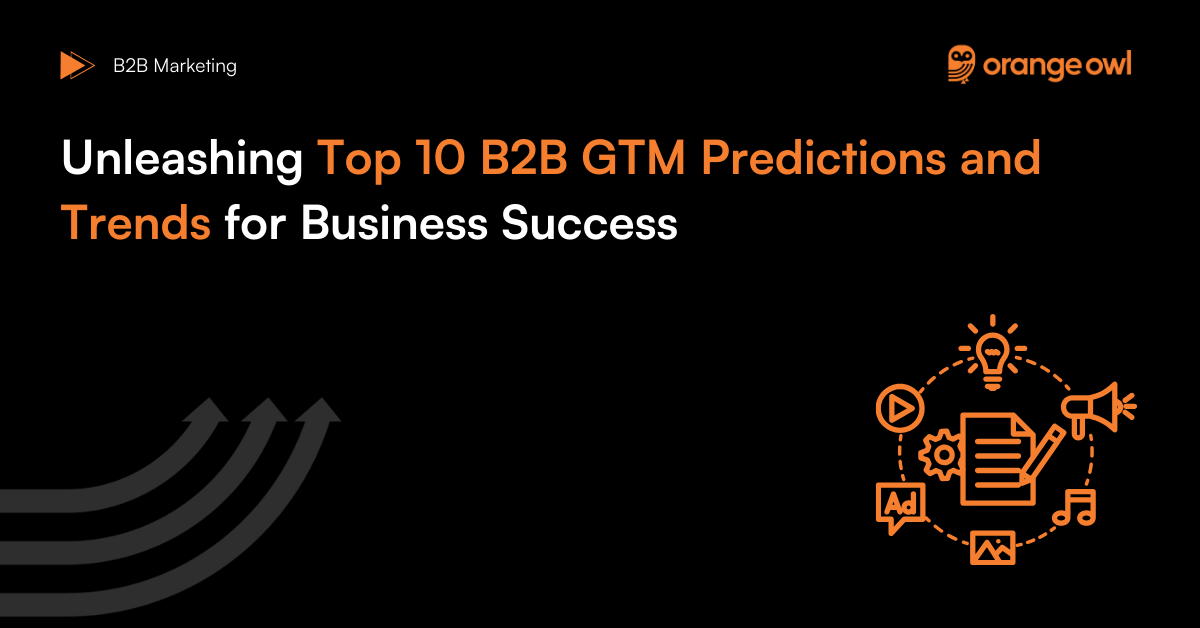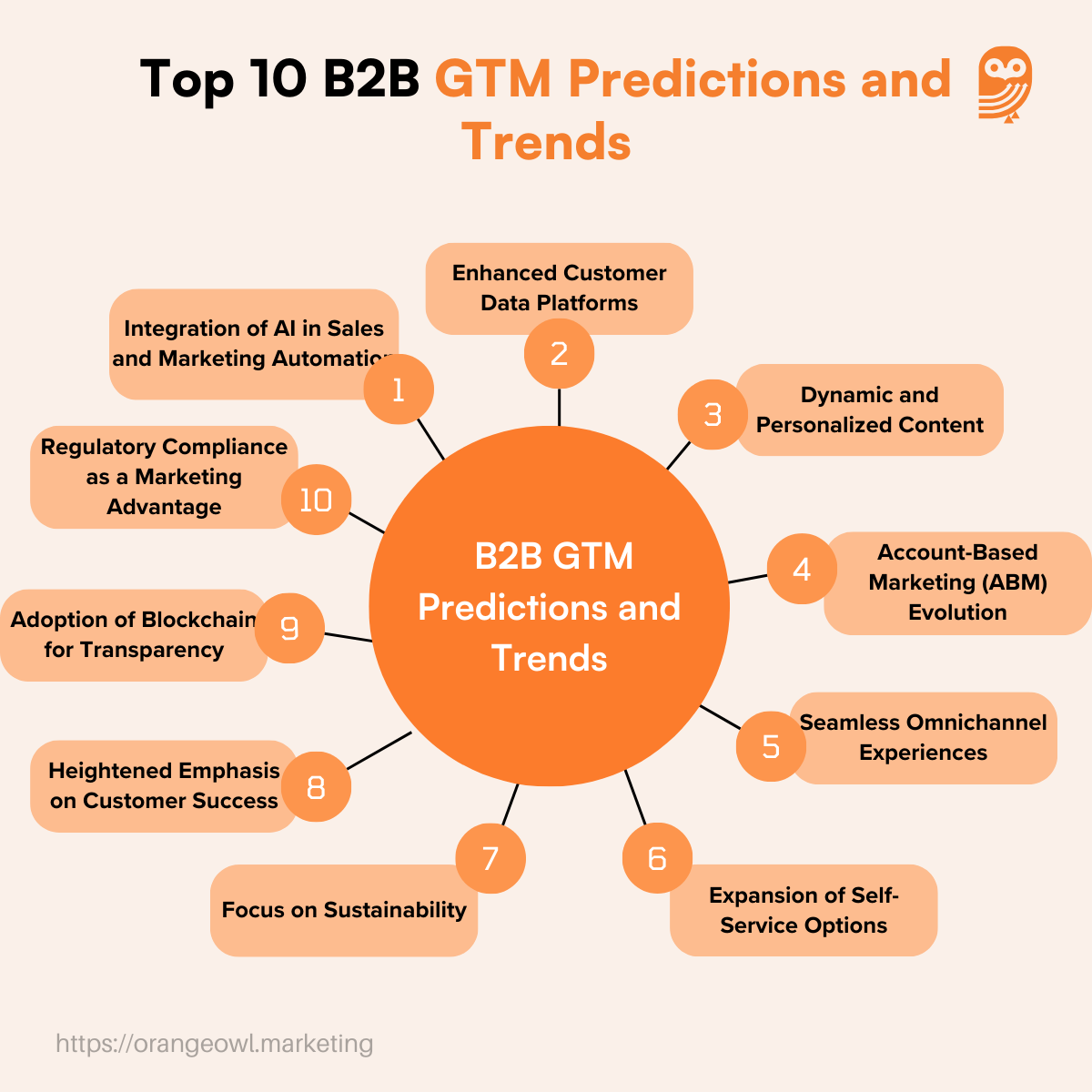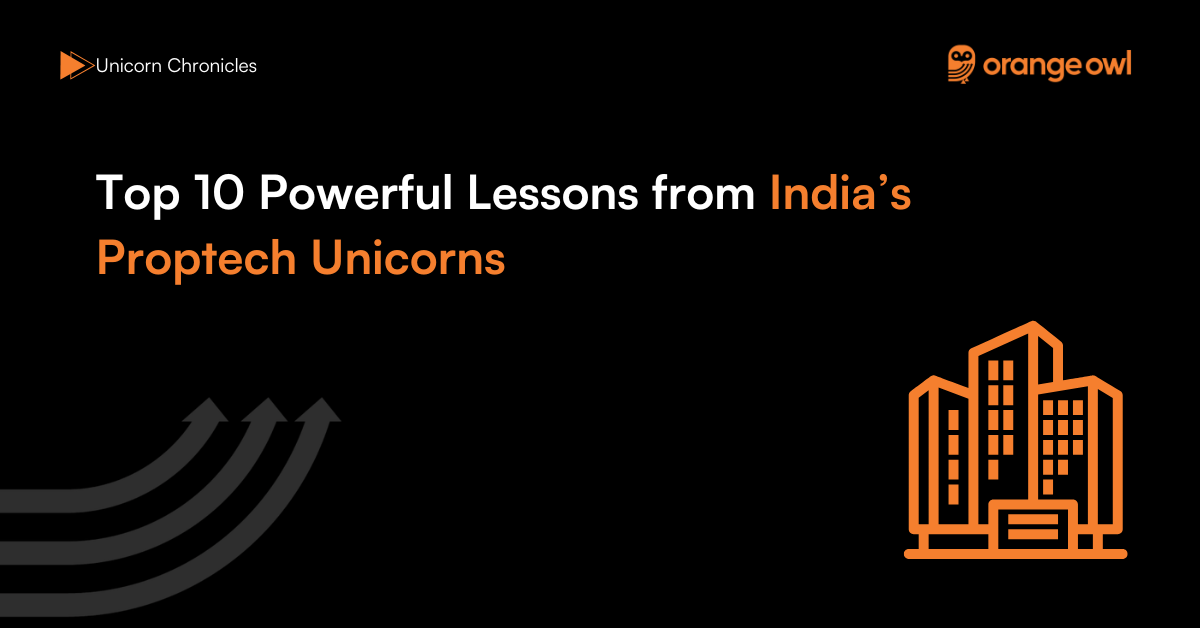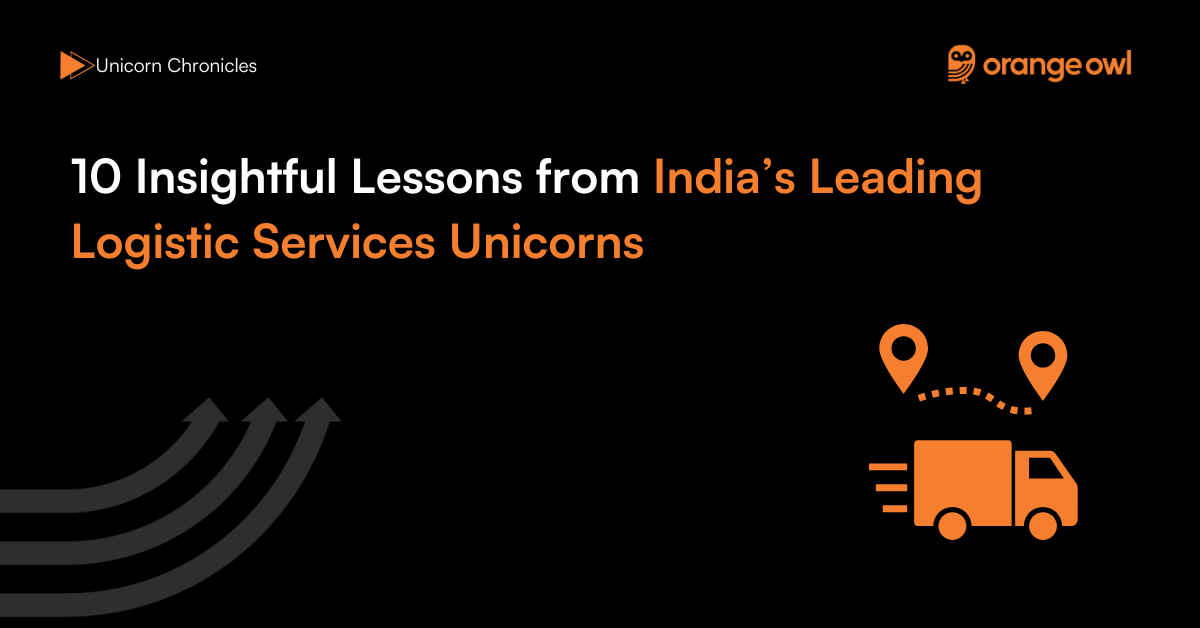Unleashing Top 10 B2B GTM Predictions and Trends to Watch in 2025 for Business Success
Vivek Goel
January 22, 2025

Table of Contents
Introduction:
As we approach the brink of 2025, it’s imperative for B2B marketers and sales leaders to stay ahead of the curve in their Go-to-Market strategies. The landscape of B2B sales and marketing continues to evolve, driven by technological advancements and changing buyer behaviours. This blog will explore the top 10 strategies and trends for B2B GTM for 2025, providing in-depth insights, actionable steps, and real-world examples to help you refine your GTM strategy.
Top 10 B2B GTM Predictions and Trends to Watch in 2025
B2B GTM Predictions No. 1: Integration of AI in Sales and Marketing Automation
Deepening the use of AI across GTM strategies will be crucial for optimizing customer interactions and streamlining sales processes.
Actionable Steps:
- Implement AI-driven tools to automate lead qualification and prioritize sales efforts based on lead scoring systems.
- Utilize predictive analytics to personalize customer interactions and forecast sales trends.
Example: A B2B fintech company could deploy AI to automatically adjust its messaging and offerings based on the prospect’s engagement level and past interactions.
B2B GTM Predictions No. 2: Enhanced Customer Data Platforms (CDPs)
The role of CDPs will expand, enabling more sophisticated aggregation and activation of customer data for targeted marketing campaigns.
Actionable Steps:
- Consolidate customer interaction data across multiple touchpoints into a single CDP for a unified customer view.
- Use insights from the CDP to tailor marketing campaigns that address specific customer needs and preferences.
Example: An enterprise software provider might use a CDP to create targeted campaigns for upselling additional modules based on the customer’s usage patterns.
B2B GTM Predictions No. 3: Dynamic and Personalized Content
Personalization will not just be preferable but necessary, as dynamic content that adapts to user behaviour and preferences becomes standard.
Actionable Steps:
- Develop modular content that can be dynamically assembled based on the user’s past interactions and expressed interests.
- Invest in technology that can deliver real-time content personalization across channels.
Example: A B2B healthcare marketing firm could personalize educational content for hospital administrators versus healthcare providers based on their unique challenges and interests.
B2B GTM Predictions No. 4: Account-Based Marketing (ABM) Evolution
ABM will evolve with greater emphasis on micro-segmentation and hyper-targeted outreach.
Actionable Steps:
- Segment target accounts more granularly based on data-driven insights, such as industry verticals, company size, and decision-maker roles.
- Develop bespoke marketing strategies that cater to the specific business needs and pain points of each segment.
Example: A cloud services company might create tailored cloud migration webinars specifically designed for small to medium-sized businesses in the retail sector.
B2B GTM Predictions No. 5: Seamless Omnichannel Experiences
Providing a seamless omnichannel experience will be key to a successful GTM strategy, ensuring consistent messaging and interaction across all platforms.
Actionable Steps:
- Map out customer journeys across all channels to identify and bridge gaps in the omnichannel experience.
- Invest in technology that supports seamless transitions between channels, ensuring continuity in the customer experience.
Example: A B2B electronics distributor could ensure that customers who start a query on mobile can easily transition to a desktop or direct call with a sales rep without having to restart their inquiry.

B2B GTM Predictions No. 6: Expansion of Self-Service Options
As B2B buyers increasingly prefer to self-educate and make purchasing decisions independently, providing robust self-service tools will become crucial.
Actionable Steps:
- Develop comprehensive, easy-to-navigate knowledge bases and FAQ sections.
- Offer interactive tools like configurators and calculators that help buyers make informed decisions.
Example: A commercial construction company could provide an online tool for potential clients to estimate project costs and timelines based on various inputs.
B2B GTM Predictions No. 7: Focus on Sustainability
Sustainability will be more prominently featured in GTM strategies as businesses increasingly prefer partners who demonstrate environmental and social responsibility.
Actionable Steps:
- Highlight sustainable practices in your marketing materials and proposals.
- Develop case studies that showcase your company’s impact on environmental or social metrics.
Example: A B2B packaging solutions company could market its biodegradable products as a competitive advantage to environmentally conscious businesses.
B2B GTM Predictions No. 8: Heightened Emphasis on Customer Success
The focus will shift from customer support to customer success, actively helping customers achieve their desired outcomes with your product or service.
Actionable Steps:
- Build a customer success team dedicated to helping clients maximize the benefits of your products or services.
- Develop customer success metrics to track and optimize customer ROI.
Example: A SaaS provider specializing in HR technology could help clients implement best practices for using their software to reduce employee turnover.
B2B GTM Predictions No. 9: Adoption of Blockchain for Transparency
Blockchain technology will be increasingly adopted in B2B transactions to enhance transparency and trust, especially in industries like supply chain management and B2B payments.
Actionable Steps:
- Explore blockchain solutions that can be integrated into your GTM processes to secure transactions and enhance data integrity.
- Educate your market about the benefits of blockchain to your offerings.
Example: A B2B logistics company might implement a blockchain solution to provide real-time, tamper-proof tracking information for shipments.
B2B GTM Predictions No. 10: Regulatory Compliance as a Marketing Advantage
As regulatory requirements tighten, using compliance as a key part of your GTM strategy will help differentiate your offerings.
Actionable Steps:
- Ensure your products and services exceed industry standards and prominently feature this in your marketing.
- Use compliance and certifications as key selling points in negotiations.
Example: A data security firm could leverage its compliance with international standards as a primary selling point in its marketing materials.
Conclusion:
As we gear up for 2025, embracing these top predictions and trends for B2B GTM will not only prepare you for the challenges ahead but also position you as a leader in the evolving B2B landscape. By implementing the detailed strategies outlined above, your business can effectively engage modern buyers, optimize your marketing efforts, and drive substantial growth. Stay proactive and responsive to these trends to ensure your GTM strategy remains robust and effective in the dynamic market of 2025.
Frequently Asked Questions (FAQs) for Top GTM Predictions and Trends
Small businesses can start by adopting affordable, user-friendly AI tools, such as CRM systems with built-in AI capabilities. These tools can help with lead scoring, customer segmentation, and automated email follow-ups. Many platforms also offer scalable pricing, making it feasible to start small and expand as needed.
Employee training is critical for adopting new tools and technologies. Regular workshops on AI, CDPs, and blockchain can help sales and marketing teams fully utilize these tools, leading to better campaign execution and customer engagement.
Companies can track metrics such as engagement rates (clicks, time spent on content), conversion rates, and customer acquisition costs. Tools like Google Analytics and marketing automation platforms can provide insights into how personalized content influences the buyer’s journey.
Companies can use data analytics tools to analyze customer data and identify high-value accounts based on criteria such as purchase history, company size, industry, and engagement levels. Collaborating with sales teams to identify potential opportunities is also key.
Challenges include inconsistent messaging across channels and lack of integration between platforms. To overcome this, businesses should centralize content management and use omnichannel marketing platforms to ensure seamless customer experiences.
By offering robust self-service tools for common queries while maintaining dedicated support teams for complex or high-value interactions. Chatbots can provide immediate assistance, escalating complex issues to human agents when necessary.
Beyond products, companies can adopt sustainable supply chain practices, reduce energy consumption in operations, and partner with environmentally conscious suppliers. Highlighting these efforts in GTM strategies can build trust and appeal to eco-conscious customers.
Blockchain can provide verifiable records of transactions, ensuring transparency and reducing disputes. It can also be used to authenticate product origins, which is particularly valuable in industries like manufacturing and food safety.
Customer success stories can be showcased in case studies, testimonials, and video interviews. These stories build credibility and demonstrate tangible results, making them powerful tools for attracting new customers.
Focus on the specific benefits compliance offers to customers, such as reduced risks, easier audits, and compatibility with industry standards. Highlight certifications and key features during sales presentations, but keep technical details accessible and relevant


